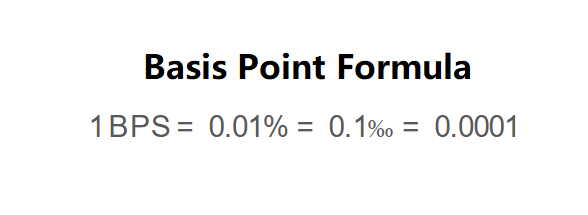 Home
Home
 Back
Back

Definition: This calculator converts between basis points (BPS), percentages, permilles, and decimal values. A basis point is a unit of measure used in finance to describe small changes in interest rates, yields, or other percentages, where 1 BPS equals 0.01% or 0.0001 in decimal form.
Purpose: Financial professionals, investors, and analysts use this tool to eliminate ambiguity when discussing percentage changes, especially in contexts like interest rates, bond yields, or mortgage rates, where small changes can have significant economic impacts.
The calculator uses the following relationships:
\( 1 \, \text{BPS} = 0.01\% = 0.1‰ = 0.0001 \)
Conversion formulas:
Steps:
Using basis points is essential for:
Example 1: Convert 50 basis points to other units:
Example 2: Convert 2% to other units:
Q: Why use basis points instead of percentages?
A: Basis points provide clarity and precision in financial discussions, avoiding confusion between relative and absolute percentage changes.
Q: Can basis points be negative?
A: Yes, basis points can be negative to indicate a decrease (e.g., a rate dropping from 3.5% to 3.4% is a change of -10 BPS).
Q: What’s the difference between basis points and permilles?
A: They are related but used differently; 1 permille (‰) = 10 BPS, but basis points are specifically used to describe changes in rates, while permilles are a general unit of measure.